#consciousness series
Text
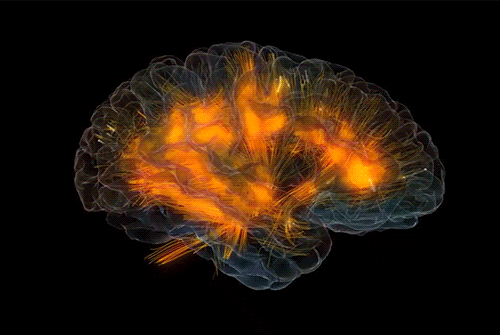
Is the Brain a Driver or a Steering Wheel?
This three part series summarizes what science knows, or thinks it knows, about consciousness. In Part 1 What Does Quantum Physics Imply About Consciousness? we looked at why several giants in quantum physics - Schrodinger, Heisenberg, Von Neumann and others - believed consciousness is fundamental to reality. In Part 2 Where Does Consciousness Come From? we learned the "dirty little secret" of neuroscience: it still hasn't got a clue how electrical activity in the brain results in consciousness.
In this concluding part of the series we will look at how a person can have a vivid conscious experience even when their brain is highly dysfunctional. These medically documented oddities challenge the materialist view that the brain produces consciousness.
Before proceeding, let's be clear what what is meant by "consciousness". For brevity, we'll keep things simple. One way of looking at consciousness is from the perspective of an outside observer (e.g., "conscious organisms use their senses to notice differences in their environment and act on their goals.") This outside-looking-in view is called behavioral consciousness (aka psychological consciousness). The other way of looking at it is the familiar first-person perspective of what it feels like to exist; this inside-looking-out view is called phenomenal consciousness (Barušs, 2023). This series is only discussing phenomenal consciousness.
Ready? Let’s go!

Source: Caltech Brain Imaging Center
A Hole in the Head
Epilepsy is a terrible disease in which electrical storms in the brain trigger seizures. For some people these seizures are so prolonged and frequent that drastic action is needed to save their lives. One such procedure is called a hemispherectomy, the removal or disconnection of half the brain. Above is an MRI image of a child who has undergone the procedure.
You might think that such radical surgery would profoundly alter the memory, personality, and cognitive abilities of the patient.
You would be wrong. One child who underwent the procedure at age 5 went on to attend college and graduate school, demonstrating above average intelligence and language abilities despite removal of the left hemisphere (the zone of the brain typically identified with language.) A study of 58 children from 1968 to 1996 found no significant long-term effects on memory, personality or humor, and minimal changes in cognitive function after hemispherectomy.
You might think that, at best, only a child could successfully undergo this procedure. Surely such surgery would kill an adult?
You would be wrong again. Consider the case of Ahad Israfil, an adult who suffered an accidental gunshot to the head and successfully underwent the procedure to remove his right cerebral hemisphere. Amazingly, after the five hour operation he tried to speak and went on to regain a large measure of functionality (although he did require use of a wheelchair afterwards.)
Another radical epilepsy procedure, a corpus collosotomy, leaves the hemispheres intact but severs the connections between them. For decades it was believed that these split-brain patients developed divided consciousness, but more recent research disputes this notion. Researchers found that, despite physically blocking all neuronal communication between the two hemispheres, the brain somehow still maintains a single unified consciousness. How it manages this feat remains a complete mystery. Recent research on how psychedelic drugs affect the brain hints that the brain might have methods other than biochemical agents for internal communication, although as yet we haven't an inkling as to what those might be.
So what's the smallest scrape of brain you need to live? Consider the case of a 44-year-old white collar worker, married with two children and with an IQ of 75. Two weeks after noticing some mild weakness in one leg the man went to see his doctor. The doc ordered a routine MRI scan of the man's cranium, and this is what it showed.
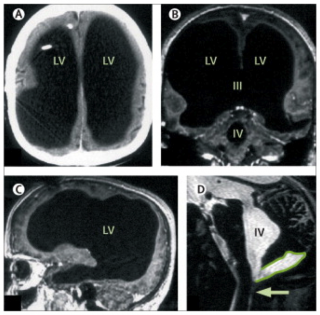
Source: The Lancet
What you are seeing here is a giant empty cavity where most of the patient's brain should be. Fully three quarters of his brain volume is missing, most likely due to a bout of hydrocephalus he experienced when he was six months old.

Last Words
Many unusual phenomena have been observed as life draws to an end. We're going to look at two deathbed anomalies that have neurological implications.
The first is terminal lucidity, sometimes called paradoxical lucidity. First studied in 2009, terminal lucidity refers to the spontaneous return of lucid communication in patients who were no longer thought to be medically capable of normal verbal communication due to irreversible neurological deterioration (e.g., Alzheimers, meningitis, Parkinson's, strokes.) Here are three examples:
A 78-year-old woman, left severely disabled and unable to speak by a stroke, spoke coherently for the first time in two years by asking her daughter and caregiver to take her home. She died later that evening.
A 92-year-old woman with advanced Alzheimer’s disease hadn’t recognized her family for years, but the day before her death, she had a pleasantly bright conversation with them, recalling everyone’s name. She was even aware of her own age and where she’d been living all this time.
A young man suffering from AIDS-related dementia and blinded by the disease who regained both his lucidity and apparently his eyesight as well to say farewell to his boyfriend and caregiver the day before his death.
Terminal lucidity has been reported for centuries. A historical review found 83 case reports spanning the past 250 years. It was much more commonly reported in the 19th Century (as a sign that death was near, not as a phenomenon in its own right) before the materialist bias in the medical profession caused a chilling effect during the 20th Century. Only during the past 15 years has any systematic effort been made to study this medical anomaly. As a data point on its possible prevalence a survey of 45 Canadian palliative caregivers found that 33% of them had witnessed at least one case of terminal lucidity within the past year. Other surveys found have that the rate of prevalence is higher if measured over a longer time window than one year, suggesting that, while uncommon, terminal lucidity isn't particularly rare.
Terminal lucidity is difficult to study, in part because of ethical challenges in obtaining consent from neurocompromised individuals, and in part because its recent identification as a research topic presents delineation problems. However, the promise of identifying new neurological pathways in the brains of Alzheimer's and Parkinson's patients has gotten a lot of attention. In 2018 the US National Institute on Aging (NIA) announced two funding opportunites to advance this nascent science.
Due to the newness of this topic there will continue be challenges with the data for some time to come. However, its impact on eyewitnesses is indisputably profound.
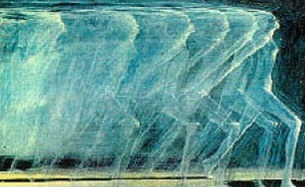
Near Death Experiences
The second deathbed anomaly we will take a look at are Near-Death Experiences (NDEs.) These are extraordinary and deeply personal psychological experiences that typically (but not always) occur during life-threatening emergencies such as cardiac arrest, falls, automobile accidents, or other traumatic events; they are also occasionally reported during general anesthesia. Much of the research in this area has focused on cardiac arrest cases because these patients are unconscious and have little to no EEG brain wave activity, making it difficult to account for how the brain could sustain the electrical activity needed to perceive and remember the NDE. This makes NDEs an important edge case for consciousness science.
NDEs are surprisingly common. A 2011 study published by the New York Academy of Sciences estimated that over 9 million people in the United States have experienced an NDE. Multiple studies have found that around 17% of cardiac arrest survivors report an NDE.
There is a remarkable consistency across NDE cases, with experiencers typically reporting one or more of the following:
The sensation of floating above their bodies watching resuscitation efforts, sometimes able to recall details of medical procedures and ER/hallway conversations they should not have been aware of;
Heightened sensations, occasionally including the ability of blind and deaf people to see and hear;
Extremely rapid mental processing;
The perception of passing through something like a tunnel;
A hyper-vivid life review, described by many experiencers as "more real than real";
Transcendent visions of an afterlife;
Encounters with deceased loved ones, sometimes including people the experiencer didn’t know were dead; and
Encounters with spiritual entities, sometimes in contradiction to their personal belief systems.
Of particular interest is a type of NDE called a veridical NDE. These are NDEs in which the experiencer describes events that occurred during the period when they had minimal or no brain activity and should not have been perceived or remembered if the brain were the source of phenomenal consciousness. These represent about 48% of all NDE accounts (Greyson 2010). Here are a few first-hand NDE reports.
A 62-year-old aircraft mechanic during a cardiac arrest (from Sabom 1982, pp. 35, 37)
A 23-year-old crash-rescue firefighter in the USAF caught by a powerful explosion from a crashed B-52 (from Greyson 2021, pg. 27-29)
An 18-year-old boy describes what it was like to nearly drown (from the IANDS website)
There are thousands more first person NDE accounts published by the International Association for Near-Death Studies and at the NDE Research Foundation. The reason so many NDE accounts exist is because the experience is so profound that survivors often feel compelled to write as a coping method. Multiple studies have found that NDEs are more often than not life-changing events.
A full discussion of NDEs is beyond the scope of this post. For a good general introduction, I highly recommend After: What Near-Death Experiences Reveal about Life and Beyond by Bruce Greyson, MD (2021).

The Materialist Response
Materialists have offered up a number of psychological and physiological models for NDEs, but none of them fits all the data. These include:
People's overactive imaginations. Sabom (1982) was a skeptical cardiologist who set out to prove this hypothesis by asking cardiac arrest survivors who did not experience NDEs to imagine how the resuscitation process worked, then comparing those accounts with the veridical NDE accounts. He found that the veridical NDE accounts were highly accurate (0% errors), whereas 87% of the imagined resuscitation procedures contained at least one major error. Sabom became convinced that NDEs are real. His findings were replicated by Holden and Joesten (1990) and Sartori (2008) who reviewed veridical NDE accounts in hospital settings (n = 93) and found them to be 92% completely accurate, 6% partially accurate, and 1% completely inaccurate.
NDEs are just hallucinations or seizures. The problem here is that hallucinations and seizures are phenomena with well-defined clinical features that do not match those of NDEs. Hallucinations are not accurate descriptions of verifiable events, but veridical NDEs are.
NDEs are the result of electrical activity in the dying brain. The EEGs of experiencers in cardiac arrest show that no well-defined electrical activity was occurring that could have supported the formation or retention of memories during the NDE. These people were unconscious and should not have remembered anything.
NDEs are the product of dream-like or REM activity. Problem: many NDEs occur under general anesthesia, which suppresses dreams and REM activity. So this explanation cannot be correct.
NDEs result from decreased oxygen levels in the brain. Two problems here: 1) The medical effects of oxygen deprivation are well known, and they do not match the clinical presentation of NDEs. 2) The oxygen levels of people in NDEs (e.g., during general anesthesia) has been shown to be the same or greater than people who didn’t experience NDEs.
NDEs are the side effects of medications or chemicals produced in the brain (e.g. ketamine or DMT). The problem here is that people who are given medications in hospital settings tend to report fewer NDEs, not more; and drugs like ketamine have known effects that are not observed in NDEs. The leading advocate for the ketamine model conceded after years of research that ketamine does not produce NDEs (Corraza and Schifano, 2010).

Summing Up
In coming to the end of this series, let's sum up what we discussed.
Consciousness might be wired into the physical universe at fundamental level, as an integral part of quantum mechanics. Certainly several leading figures in physics thought so - Schrodinger, Heisenberg, Von Neumann, and more recently Nobel Laureate Roger Penrose and Henry Stapp.
Materialist propaganda notwithstanding, neuroscience is no closer to identifying Neural Correlates of Consciousness (NCCs) than it was when it started. The source of consciousness remains one of the greatest mysteries in science.
Meanwhile, medical evidence continues to pile up that there is something deeply amiss with the materialist belief that consciousness is produced by the brain. In a sense, the challenge that NDEs and Terminal Lucidity pose to consciousness science is analogous to the challenge that Dark Matter poses to physics, in that they suggest that the mind-brain identity model of classic materialist psychology may need to be rethought to adequately explain these phenomena.
Ever since the Greeks, science has sought to explain nature entirely in physical terms, without invoking theism. It has been spectacularly successful - particularly in the physical sciences - but at the cost of excluding consciousness along with the gods (Nagel, 2012). What I have tried to do in this series is to show that a very credible argument can be made that materialism has the arrow of causality backwards: the brain is not the driver of consciousness, it's the steering wheel.
I don't think we are yet ready to say what consciousness is. Much more research is needed. I'm not making the case for panpsychism, for instance - but I do think consciousness researchers need to throw off the assumption drag of materialism before they're going to make any real progress.
It will be up to you, the scientists of tomorrow, to make those discoveries. That's why I'm posting this to Tumblr rather than an academic journal; young people need to hear what's being discovered, and the opportunities that these discoveries represent for up and coming scientists.
Never has Planck's Principle been more apt: science advances one funeral at a time.
Good luck.
For Further Reading
Barušs, Imants & Mossbridge, Julia (2017). Transcendent Mind: Rethinking the Science of Consciousness. American Psychological Association, Washington DC.
Barušs, Imants (2023). Death as an Altered State of Consciousness: A Scientific Approach. American Psychological Association, Washington DC.
Batthyány, Alexander (2023). Threshold: Terminal Lucidity and the Border of Life and Death. St. Martin's Essentials, New York.
Becker, Carl B. (1993). Paranormal Experience and Survival of Death. State University of New York Press, Albany NY.
Greyson, Bruce (2021). After: A Doctor Explores What Near-Death Experiences Reveal about Life and Beyond. St. Martin's Essentials, New York.
Kelly, Edward F.; Kelly, Emily Williams; Crabtree, Adam; Gauld, Alan; Grosso, Michael; & Greyson, Bruce (2007). Irreducible Mind: Toward a Psychology for the 21st Century. Rowman & Littlefield, New York.
Moody, Raymond (1975). Life After Life. Bantam/Mockingbird, Covington GA.
Moreira-Almeida, Alexander; de Abreu Costa, Marianna; & Coelho, Humberto S. (2022). Science of Life After Death. Springer Briefs in Psychology, Cham Switzerland.
Penfield, Wilder (1975). Mystery of the Mind: A Critical Study of Consciousness and the Human Brain. Princeton Legacy Library, Princeton NJ.
Sabom, Michael (1982). Recollections of Death: A Medical Investigation. Harper and Row Publishers, New York.
van Lommel, Pim (2010). Consciousness Beyond Life: The Science of the Near-Death Experience. HarperCollins, New York.
#consciousness#cognitive science#near death experiences#nde#terminal lucidity#terminal illness#cognitive neuroscience#paradoxical lucidity#hemispherectomy#corpus collosotomy#psychadelic#psychonaut#psychonauts#psilocybin#lsd#ketamine#materialism and its discontents#neurology#neuropsychology#philosophy of mind#brain#quantum physics#consciousness series
51 notes
·
View notes
Text






Call Down The Hawk - Maggie Stiefvater / Graywaren - Maggie Stiefvater / Peinture 324 x 181 cm - Pierre Soulages / The Son Of Man - René Magritte / Graywaren - Maggie Stiefvater / Graywaren - Maggie Stiefvater
#tdtedit#declanedit#ronanedit#Declan Lynch#Ronan Lynch#TDT#the Dreamer Trilogy#TRC#the fact that Ronan - Declan's BROTHER who has known him literally their entire lives - has both never seen Declan cry#AND never seen him truly unreservedly un-self-consciously smile#is goddamn tragic#but the true emotional resolution to the series for me is that Ronan sees both of these things in the last chapter#both Declan's grief and his joy#displayed openly where Ronan is allowed to witness them for the first time instead of hidden carefully away#like many many other things about this series#it makes me wanna GODDAMN CRY adlfkgj#quote posts
717 notes
·
View notes
Text
Astarion’s the ex-boyfriend who reluctantly let you go because he felt like he wasn’t good enough.
He’s the ex who took some time away to mature before he could face you and your companions again.
It was nothing you did—Gods, you were perfect. He just wasn’t ready for what a genuine relationship entailed. For what it cost.
When Withers reunites you, you secretly hope to mend things—and, secretly, so do your friends.
Your conversation is seamless as if you hadn’t spent all these months avoiding one another like a sickness.
He smiles more. Your laughter’s lighter now. He’s no less beautiful than he was six months ago. His touch still makes your skin prickle with static electricity despite its harmlessness. Still makes your heart stutter, and those dragonflies stir in your belly, and you’re a nervous little wreck, aren’t you?
You part ways with see you laters as opposed to goodbyes because the latter would imply you’re done for good. But fate has a tricky way of meddling with your lives and bringing you back together like driftwood returned to the shoreline.
Eventually, you become acquaintances, running into each other by happenstance throughout Baldur’s Gate.
Bumping hands whilst reaching for a book in the library. Encountering each other at the night market, exchanging familiar smiles and nods—Gods, darling, you’re still as terrible at scoping out a good deal as ever, he jests with that customary waggle of his hand.
Then, you become friends again. Close friends. And eventually, he becomes a constant in your life once more, showing up to your home each night with the promise of wine and juicy gossip—it’s all just a ruse to see you.
Though your breaths hitch in tandem each night you find him seated close to you on your settee—your thighs brush together, your pinkies graze, and his lips “accidentally” touch your cheek—you don’t want to ruin things. Don’t want to dredge up those old feelings. Fester those old wounds because, of course, you still pine for one another.
But you don’t want to muck up your rekindled friendship by once again rushing into something he may still not be ready for.
So you settle for breaking your own heart each night, smiling like a drunken, enamored fool while he rests his head in your lap. And you twirl his pretty little curls about your fingers, watching his lashes flutter, and his cheeks redden with your blood—you still offer it to him from time to time. That’s what friends do, right?
And though your lips twitch with a question, with that urge to ask what happened to us—with a need to lean down and kiss him—you stomp down those impulses.
You’re content with sitting with him like this, watching a smile round his lips and his chest quake with a fond chuckle because maybe he’s still as much taken by you as you’ve always been by him.
And maybe it’s just you being wishful. Maybe it’s the candlelight playing tricks on your eyes. Perhaps it’s the wine warming in your veins, making you delusional.
But you feel his hand at your nape, slowly drawing you closer. And the world around fades into a beautiful bokeh when your lips meet, and your neck hurts from the angle, and maybe your lips are a little chapped and unrehearsed after all this time, but…
Well, it’s every bit of perfect. Just like you remembered it.
#astarion x reader#astarion x tav#astarion x you#bg3 astarion#bg3 fanfiction#astarion fluff#astarion#stream of consciousness#lovers to strangers#strangers to friends#friends to lovers#idk i’m on my period and in my feelings tonight#and i watched the epilogue after breaking up with him and like#there’s hope there#also inspired by my kindle series
508 notes
·
View notes
Note
would you be able to give examples/explain more about how race only impacts gideon in the tlt-universe? not being facetious or condescending, genuinely asking. thank you!
Hi anon! If you mean my tags to this post, I wrote
#earth conception of race doesn't impact any character in the series except the canonically brown main antagonist
By which I mean my Worstie and main antagonist of the series, John Gaius (PhD).
I don’t think TLT as a series engages with race in any especially meaningful ways. It’s set in a post-Earth society with entirely different social norms, and there’s no concept of race and ethnicity within the population of the Nine Houses. Physical descriptions of the characters are scarce to say the least, and they rarely spell out the kind of features that suggest specific racial connotations, because the POV characters don’t seem to think it’s something worth remarking upon. iirc, it takes until halfway through HtN for the narrative to confirm that Harrow has brown skin.
[See also Tamsyn’s GtN characters description post. It quotes passages from the book, and you can see how minimal the descriptions are, and she repeats several times that her characters’ appearances are up to the readers’ interpretations. It just doesn’t seem to be a big concern of hers]
Then there’s John, who grew up in twenty-first-century New Zealand and IS explicitly Māori in a way that absolutely impacted his character arc. It's not A major theme of his Nona chapters, but it’s there if you read between the lines. The boarding school he went to, which IRL had a high percentage of low-income Māori students on scholarship. The depth of his climate anxiety, his uncompromising “Nobody left behind” stance before the cryo project was halted, and his fervent hatred of ‘the trillionaires’ afterwards... these are all informed to some extent by his background as an indigenous man imo, and so was the global reaction to his developing powers. The “We were going to put you fellas in jail, weren’t we?” the way his initial attempts at publications are all flat-out ignored by the scientific community and dismissed as culty gimmicky faith healing until he leans into it.
John being Māori is just one of the many pieces of his backstory, and far from the most impactful to what eventually went down, but my point remains that he is the ONLY character in TLT whose racial background 1) affects his story arc and 2) is relatable to the audience. Everyone else is ten thousand years removed from Earth, and I’m just not very interested in using racial identifiers when exploring these characters and their dynamics, because the characters themselves don’t care and neither does the narrative.
#on a more hashtag meta level#John is why I’m personally uneasy about any analysis of the series that tries to interpret TLT through racial allegory lenses#especially when it’s weaponised for discourse purposes#You can write meta about John’s war crimes without comparing him to white imperialism#Or you can go ahead and do that anyway but I highkey disagree that it’s a fitting metaphor or in any way deliberate on Tamsyn’s part#and I think the implications are unfortunate to say the least#That said I AM extremely interested in the ways John relates to the culture he left behind#and why he made the choices he did when it came the moment to reshape humanity’s cultural consciousness after the Resurrection#but that’s on a character level!#I don’t think we can apply twenty-first-century social / identity labels to the series as a whole#especially a series where the author says 'I imagine X character as Y but it doesn't raelly matter'#and it doesn't influence the canon directly in any way#SORRY THIS IS LONG!#anonymous#ask#ejg#tlt thoughts#elle tlt posting#tlt
353 notes
·
View notes
Text
I decided the grian cleo and etho group should be named the bdubs fanclub (I'd say fanclubs for the rhyme but then it means each one of them is a separate fanclub and there's probably some implication there)
#trafficblr#traffic smp#traffic series#secret life spoilers#life series#secret life#traffic spoilers#slsmp spoilers#slsmp#sl spoilers#grian#ethoslab#zombiecleo#Anyways it's getting late do you think I can squeeze another pov in before going to bed#(I need to go sleep in half an hour or I will actually lose consciousness at random times tomorrow)
106 notes
·
View notes
Text
love kim dokja's non sequitur answer to people thinking he's into yoo joonghyuk: "i like women." okay? good for you?? quick question totally unrelated but have you heard of bisexuality.
#'do you like this man?' 'i like women.' okay. totally irrelevant bestie <3#also the amount of genderfluidity in this series is like. way above my expectations#i just got to the breaking the sky sword saint arc and i'm pretty sure yjh has to turn into a lady whenever he uses that technique??#AND i think he asked biyoo to cut kdj's screen in part so that kdj wouldn't see him turn into a lady???#rotating him. centrifugally.#and that's just one guy. han sooyoung and jang hayoung and nirvana just off the top of my head also have Gender Stuff#plus kim dokja's orv stage 3 where he just inserts his consciousness into the bodies of his buddies of any gender <3#orv#omniscient reader's viewpoint#bi#kdj#my posts#f#kim dokja is literally one of the most bisexual characters to ever and he appears to have zero awareness of this fact#which is great bi rep at least for me lol. some of us are stupid!
70 notes
·
View notes
Text
I need to know if Scar is the Watchers' favorite and they like to stir up crap with him, or if they're pissed that he defies the order they set by holding something from a previous life game so deep in his memory
Or if they're just pissed at Grian who, to his own dismay, buried himself into someone's memory when he's the only one who's supposed to remember past lives. And if the Watchers are using Scar to purposefully punish and mock the Grian who was only ever meant to watch. Or if it's all Scar, to consciously show that he hasn't forgotten and he knows Grian hasn't either. What if the Watchers (who believe to be manipulating him), like so many others have, see him as an oblivious fool, and what if Scar plays into that notion yet again as one of his greatest strengths
#so many theories to be had so little time. wondering whether traffic Scar does this consciously or not is driving me nuts#we have had so many callbacks to prev life series in random banter of course but when they do THAT to Scar's skin. Oolala#desert duo#scarian#I like the whole Watcher deal but I want to believe Scar is also defying them whether the Watchers realize it or not#too many thoughts and too much angst we love it here
87 notes
·
View notes
Text
Once again thinking about how every single one of Loki’s emotional problems stems from his abandonment and rejection issues, which originated from him being rejected and abandoned as an infant.
#like literally. all of them.#his trust issues. his insecurity issues. his desperation to prove himself. his feeling of having no place and no purpose. his jealousy.#every single emotional problem he has ultimately can be traced back to deep seated feelings of rejection and abandonment#and the first and most scarring abandonment he ever had was when his bio father left him to die#like even though he doesn’t consciously remember it#it definitely screwed him up for life#i just love that all of his angst over all of the projects he’s been in can be traced back to the 1 thing marvel doesn’t wanna talk about#his adoption/heritage#it’s so tragically poetic#and this exactly why it needs to be brought up way more than it is#jotun loki#loki Laufeyson#loki meta#thor 2011#Loki series#Laufey#odin
115 notes
·
View notes
Text
The ant that was turned into a human when it discovers it can no longer chew through drywall

#alexios yells#don't ask me what this means#I was half asleep when this series of words wormed its way into my consciousness#and I felt possessed to post it
42 notes
·
View notes
Note
Hello ms bubble wizard mage maam', I was just wondering what are your thoughts on magolor regarding how he's apparently **highly aware** of all characters to ever exist in the kirbyverse
Also its become a trend where god is replaced with NOVA in the expressions... Do they know?
Ello ello!
I like Magolor a lot, but he is omniscient? That's news to me. Is there a source for that? :O Unless you're talking about that Magoverse trend I saw floating around a while back- I didn't see much but what I did encounter reminded me of all the different Sans Undertale AUs out there. Hehehe Magolor is quite versatile! What fun.
And I know people use Nova as an expletive when writing Kirby characters! It's cool!
I use profanity in real life but I personally try to not associate Kirby characters with it in the works I make. I want to diversify the vernacular of the citizens of Popstar so I made a small list of expletives I thought of, lol. They should have a variety of things to yell out when they stub their feet or an apple falls on their head! So I get randomly inspired out in the world and I make sure to write them down!
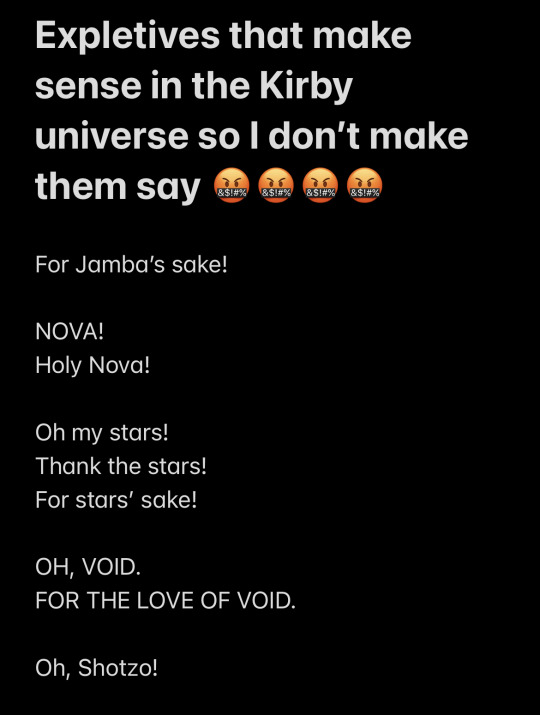
I remember seeing someone have the characters use expletives based on food, like for example, "For the love of shortcake!" or things like that. That idea's fun!! (If you are the person who had this headcanon and are reading this please tell me so I can credit you for it!)
Does anyone else have expletives/exclamations they write for Kirby characters? Please share them if you do heehee. It makes the world building feel more fleshed out and creative >:3
#ask#headcanon#magolor#also if you use profanity in your Kirby works that is totally fine!! Everyone writes differently and has preferences#as long as a writer isn't going into like... problematic territory? But that's a pretty extreme boundary to cross#I don't think the average Kirby creator/enjoyer crosses into extreme or inappropriate territory. (at least I hope)#and I do sometimes find it funny to see a Kirby character say a bad word lmao!#But I personally would not make Kirby say f--- haha. I've seen enough of that in the real world ;P#and I try to keep the audience of a series like Kirby in mind#I think the most severe word I'd use for a Kirby character myself is “damned” in the context of condemning something to punishment#It's just my personal opinion and style right now!#if I wrote fan stories for like GTA or something then that would be different :P#I'm also trying to swear less in real life too lol#I am making..... some progress on that. xD#anyway thanks for riding the train of my stream of consciousness#take a complementary high five on your way off the train#:P
70 notes
·
View notes
Text

VERY blue eyes. some might say FRIGHTENINGLY blue eyes.
#why is it always the shitposts that turn out so good </3#like damn I really like how I drew tharkay here#temeraire#my art#william laurence#tenzing tharkay#should I tag this as willzing????#temeraire fanart#temeraire series#I have no idea where this came from#it just latched onto my consciousness and refused to let go
43 notes
·
View notes
Text
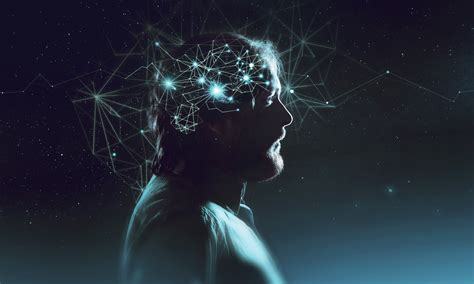
What Does Quantum Physics Imply About Consciousness?
In recent years much has been written about whether quantum mechanics (QM) does or does not imply that consciousness is fundamental to the cosmos. This is a problem that physicists have hotly debated since the earliest days of QM a century ago. It is extremely controversial; highly educated and famous physicists can't even agree on how to define the problem.
I have a degree in physics and did some graduate level work in QM before switching to computer science; my Ph.D. addressed topics in cognitive science. So I'm going to give it a go to present an accessible and non-mathematical summary of the problem, hewing to as neutral a POV as I can manage. Due to the complexity of this subject I'm going to present it in three parts, with this being Part 1.
What is Quantum Mechanics?
First, a little background on QM. In science there are different types of theories. Some explain how phenomena work without predicting outcomes (e.g., Darwin's Theory of Evolution). Some predict outcomes without explaining how they work (e.g., Newton's Law of Gravity.)
QM is a purely predictive theory. It uses something called the wave function to predict the behavior of elementary particles such as electrons, photons, and so forth. The wave equation expresses the probabilities of various outcomes, such as the likelihood that a photon will be recorded by a detection instrument. Before the physicist takes a measurement the wave function expresses what could happen; once the measurement is taken, it's no longer a question of probabilities because the event has happened (or not). The instrument recorded it. In QM this is called wave function collapse.
The Measurement Problem
When a wave function collapses, what does that mean in real terms? What does it imply about our familiar macroscopic world, and why do people keep saying it holds important implications for consciousness?
In QM this is called the Measurement Problem, first introduced in 1927 by physicist Werner Heisenberg as part of his famous Uncertainty Principle, and further developed by mathematician John Von Neumann in 1932. Heisenberg didn't attempt to explain what wave function collapse means in real terms; since QM is purely predictive, we're still not entirely sure what implications it may hold for the world we are familiar with. But one thing is certain: the predictions that QM makes are astonishingly accurate.
We just don't understand why they are so accurate. QM is undoubtedly telling us "something extremely important" about the structure of reality, we just don't know what that "something" is.
Interpretations of QM
But that hasn't stopped physicists from trying. There have been numerous attempts to interpret what implications QM might hold for the cosmos, or whether the wave function collapses at all. Some of these involve consciousness in some way; others do not.
Wave function collapse is required in these interpretations of QM:
The Copenhagen Interpretation (most commonly taught in physics programs)
Collective Collapse interpretations
The Transactional Interpretation
The Von Neumann-Wigner Interpretation
It is not required in these interpretations:
The Consistent Histories interpretation
The Bohm Interpretation
The Many Worlds Interpretation
Quantum Superdeterminism
The Ensemble Interpretation
The Relational Interpretation
This is not meant to be an exhaustive list, there are a boatload of other interpretations (e.g. Quantum Bayesianism). None of them should be taken as definitive since most of them are not falsifiable except via internal contradiction.
Big names in physics have lined up behind several of these (Steven Hawking was an advocate of the Many Worlds Interpretation, for instance) but that shouldn't be taken as anything more than a matter of personal philosophical preference. Ditto with statements of the form "most physicists agree with interpretation X" which has the same truth status as "most physicists prefer the color blue." These interpretations are philosophical in nature, and the debates will never end. As physicist M. David Mermin once observed: "New interpretations appear every year. None ever disappear."
What About Consciousness?
I began this post by noting that QM has become a major battlefield for discussions of the nature of consciousness (I'll have more to say about this in Part 2.) But linkages between QM and consciousness are certainly not new. In fact they have been raging since the wave function was introduced. Erwin Schrodinger said -
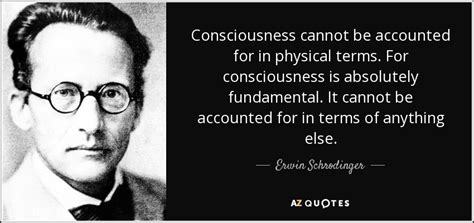
And Werner Heisenberg said -

In Part 2 I will look deeper at the connections between QM and consciousness with a review of philosopher Thomas Nagel's 2012 book Mind and Cosmos. In Part 3 I will take a look at how recent research into Near-Death Experiences and Terminal Lucidity hold unexpected implications for understanding consciousness.
(Image source: @linusquotes)
#quantum physics#consciousness#copenhagen interpretation#superdeterminism#many worlds#philosophy#physics#philosophy of mind#brain#consciousness series
95 notes
·
View notes
Photo
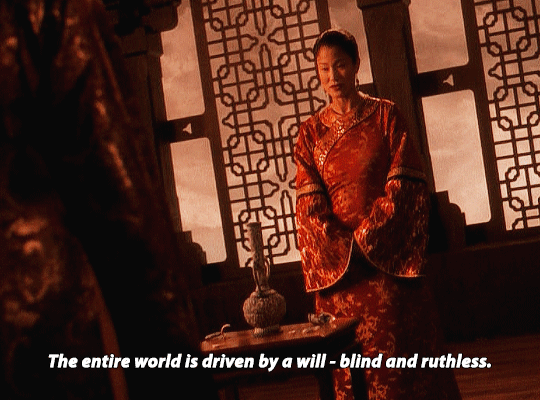
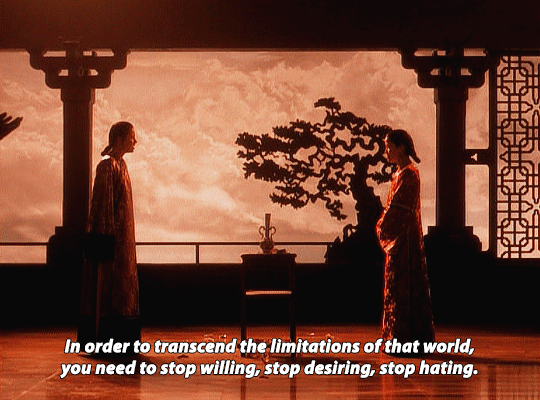

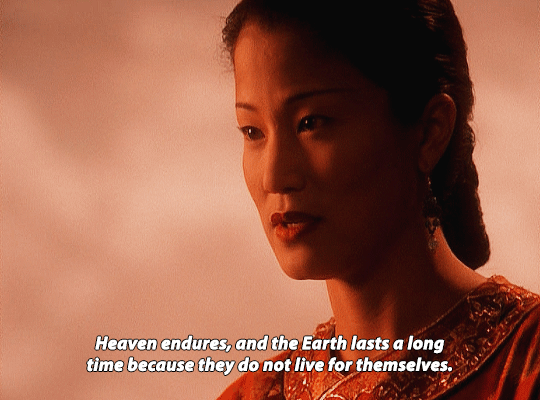

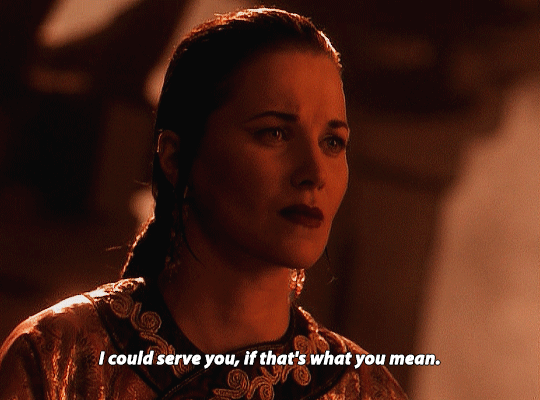
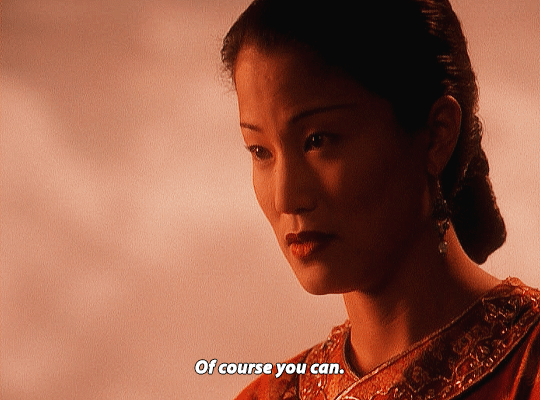

Xena Warrior Princess 3x07 The Debt (2)
You mean that I should serve someone who hates me. More than that, you need to serve someone you hate. I'd rather die. You've been a dead woman for a long time now Xena, I'm offering you the chance to live.
#xena warrior princess#xwpedit#xenaedit#wlwedit#wlwsource#tvedit#dailyflicks#xena*#gif*#I am 100% on the xena/gabrielle train bc duh but man I LOVE xena's relationship with lao ma and I wish we'd seen more of it in the series...#lao ma being xena's first turning point and helping her gain her consciousness back etc is so important to me...#lao ma is described as both soft and hard and that's exactly what xena needed and yeah she loved her and admired her so much to the point#that she felt indebted to her#xena in the debt ep series is lit like that meme that's like#If Lao Ma has a million fans then I am one of them. If Lao Ma has ten fans then I am one of them. If Lao Ma has only one fan then that is me#If Lao Ma has no fans then that means I am no longer on earth. If the world is against Lao Ma then I am against the world.#anyway I just love it - I just love the idea that dark xena came around to the point of wanting to serve this woman simply because she#believed in her and in how much of a good influence she could be 'I have been blessed or cursed to see into the souls of others. You don't k#know it yet Xena but you're a remarkable woman capable of greatness'#LIKE....... idk it just makes me insane the unconditional support the unconditional love.... anyways
222 notes
·
View notes
Text
Okay firstly, Barcode is fucking eating this shit up! This kid is knocking this role out of the damn park, seriously, comparing the role of Non to Porchay is absolutely insane! He’s gone from just a little kid to this 5 star actor and I for one could not be any prouder. Like for real, holy shit! It’s impossible to look away from him. He owns every scene he’s in.
Secondly, I really hope they do a flash forward to Non’s parents, because I would love to see them dealing with the loss of Non after how they both reacted to his many transgressions.
Tee’s uncle wants to teach Non a lesson, that could explain the one killer’s limp/crutch. If he had his legs broken or mangled and they didn’t heal correctly, Non could need help getting around from a crutch or cane.
#Lynn watches DFF#dff the series#dead friend forever#dff spoilers#barcode tinnasit#I wasn’t planning on doing a live watch stream of consciousness but here we are lol
25 notes
·
View notes
Text
do you think little kit and jade played pretend as kids and argued over who got to be the knight and acted out big adventures and enlisted airk as their opponent/squire/horse and got pretend married at the end until they were a little older and the possibility of marrying someone else got a little too real and do you think kit ever tried to switch their duties because she didn’t want to be a princess until she followed jade one day to muck out the stables and not so casually backed out do you think tweenage kit ever got flowers from a boy and immediately ran to present them to jade on one knee (‘my lady’) cause her reaction was, like, way more exciting than the flowers anyway and do you think
some nights after madmartigan left kit would wake up needing a distraction and find jade and they’d stay up talking until they drifted off and this became a habit and maybe they kept falling asleep in the same bed until they were just a bit too big to fit right and as kit was expected to attend nice balls and such do you think that there were nights when kit asked jade to help her out of this stupid dress and as jade untied it there was a pause where she wondered if this was crossing a line but figured there was no way kit was thinking the same thing, until kit raged on about the guy she danced with that night and begged jade to go with her next time cause there’s no way she could do it alone again. do you think jade started to get scared about the future and tried to distance herself and focus on training and fulfilling at least one of her dreams but she’s holding onto these last moments with kit, letting her win in sparring to see her happy and arrogant and cause quite frankly she doesn’t know how to navigate the space between them without the pretense, and she’s desperately soaking in the time before kit would be married and she’d have to leave and everything would change forever and she’s desperately in love with her one real friend but she’s trying to let her go cause she’s the princess and it was a childish dream to think they ever had a chance and childhood is over and they both need to try to be happy but then kit kisses her and says she’s leaving and throws it all up in the air and jade just needs time to think and maybe know that she’ll be able to find her again somehow, and then airk is taken and these are awful circumstances but it’s also a break in time and space and they’re existing outside of what they thought possible and finding what it means to be in each other’s lives outside of the kingdom and everything they knew before. yeah
#hi. im feeling really normal enjoy my stream of consciousness#um. i kinda just went crazy thinking abt all this. will tag in case anyone wants to be a little silly with me#willow 2022#willow series#kit tanthalos#jade claymore#tanthamore#i just have a lot of thoughts and perhaps feelings#a.og
247 notes
·
View notes
Text
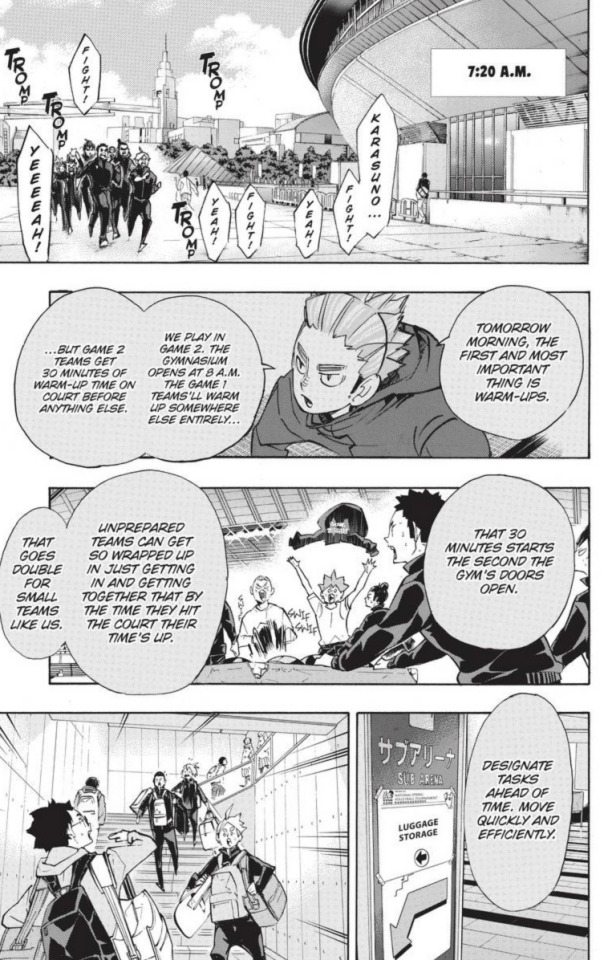
oh man, i get why panels like these dont make into animation because on the surface they're just like, administrative-y feeling and superfluous exposition that doesn't affect the plot, but ah i actually think these type of details are one of the things that pushes haikyuu over the edge in terms of fleshing out a world that feels rooted in reality
like, this whole page mainly functions to contribute to the series' themes about volleyball being about more than what just happens on the court (and how it's your habits and dedication to all things that will bring you to success or happiness), but i like that it's also subtly adding to the series' unspoken themes about classism with the "that goes double for small teams like us" line. and how we see each member of the team practically drowning in bags and equipment to take inside and everyone has a job and tasks—and i mean everyone too, we easily see takeda in the bottom left, but yachi is there too, and then players who are starters or senpais (who usually arent given duties bc theyre supposed to focus on warming up staying focused etc) like daichi pushing the ball cart, are helping too—because there's no sort of official/sponsored outside support and they can only rely on themselves
i especially like how the line is basically an offhand comment too, there isn't a complaint in there anywhere, it's just a fact of something they need to be aware of so they can get the job done and meet all of the other teams on a level playing field—that's the part that i think furudate does so successfully throughout the series. these small moments are just sprinkled throughout the whole thing to give the reader a very solid and real understanding of the school's reality without having to shine a spotlight on it directly—like the bit about how excited tanaka is when he sees the big hotel only to find out that theyre at the much smaller one next door (while the girls rep from miyagi, who won the most recent interhigh, actually is in the big hotel) (and of course everything from this post that i've reblogged a bunch of times lmao)
ah man, or like this panel from when they first arrive at nationals too

daichi just casually mentions that they're gonna have a gym to practice in because nekomata put in a good word for them—implying that without that connection (!!) they would have struggled to find somewhere to warm up/practice before the matches, because of money or reputation or both. it says so much about karasuno's position compared to other teams with just a single line!
and just aah it's so good! it adds such good flavor and texture to just so simply show the differences in opportunities all the teams have AND it also manages to emphasize the themes about connection at the same time! like nekomata obviously didn't have to help them out but he does because he values the rivalry the teams have and the growth that's been fostered because of it. and that then allows karasuno to grow more too!! all of it is so much more than just the plays that happen on the court!!
#like i dont think the word 'poor' or any equivalent is ever said in the whole series and i dont think its something a lot of readers would#consciously pick up on on a first read through but if you asked them directly 'does karasuno have money' theyd easily be able to answer 'no#hq#2021 reread#this is still volleyball#connect#karasuno#hq meta#long post
41 notes
·
View notes